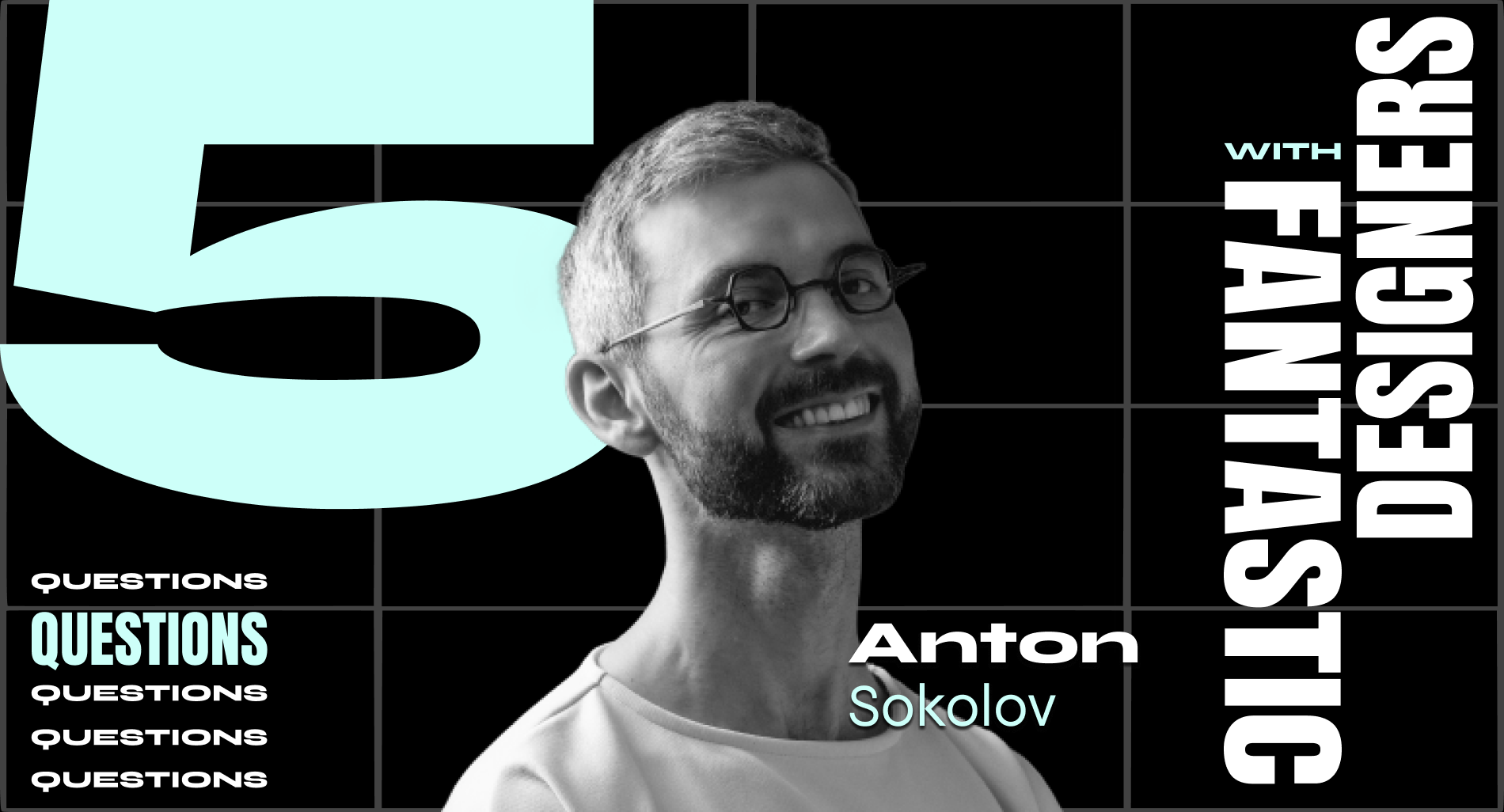At JetBrains, creators of Kotlin and IntelliJ IDEA, Anton designs productivity apps for software development teams, focusing on code collaboration.
When not designing software, Anton runs ½8, a collective gathering of artists, engineers, and writers for multifaceted projects. The name ½8 reflects complexity: arithmetically, ½8 is 4; graphically, it splits 8 into two 0s horizontally and 3 vertically. Additionally, 8 resembles ∞, and ∞/2 remains ∞, embodying the diverse nature of his work. Other projects follow this naming pattern.
The most notable project is “Half of a Journal,” a zine recording personal learnings and experiences. It represents an infinite, continuous journey without clear boundaries. Chapters capture life experiences, like reading books, watching movies, and exploring new places with family and friends.
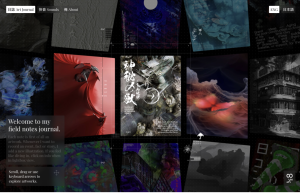 Half of a Journal digital exhibition that provides a platform to engage with journaling’s outcomes. The author consistently curates artworks and texts and occasionally complements the former with musical tracks.
Half of a Journal digital exhibition that provides a platform to engage with journaling’s outcomes. The author consistently curates artworks and texts and occasionally complements the former with musical tracks.
1. What design trends do you think will take off this year and more in the future?
In recent years, the generalist approach has become popular as people tend to learn several tools from different parts of the spectrum (3d, motion, copywriting, etc). AI tools will elevate it further, expanding said spectrum.
Thus, I expect to see a rise in full-stack side creative projects. In the coming months, people who were blocked by a lack of finances or development team connections will start building all kinds of previously shelved projects.
This includes me. In addition to projects where I plan to collaborate with my usual cross-functional partners, I’d like to experiment with no-code or low-code tools powered by LLMs. Quick prototyping and proof of concept via AI code and graphic generation will streamline idea refinement and automate many tasks, allowing people to focus on their preferred craft. For me, those are graphic design, WebGL, multi-page layout, and 3D rendering.
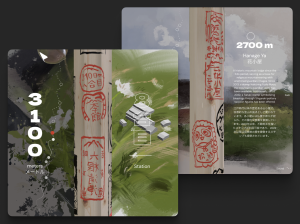 Snapshots of Half of Mt Fuji project where 3D and webGl is heavily used. Projects provides an engaging medium to understand the beauty of the conceptual side of iron stamping while summiting Mt Fuji. Here, one can find stamps from the 5th station to the summit, excerpts from interviews with station owners, various insights, and illustrated background based on photographs of the scenery and the stations themselves.
Snapshots of Half of Mt Fuji project where 3D and webGl is heavily used. Projects provides an engaging medium to understand the beauty of the conceptual side of iron stamping while summiting Mt Fuji. Here, one can find stamps from the 5th station to the summit, excerpts from interviews with station owners, various insights, and illustrated background based on photographs of the scenery and the stations themselves.
2. When it comes to making design and the design industry more diverse, equal, and inclusive, what changes are needed or would you like to see?
Firstly, I would love to see more openness to cross-switching from one discipline, like product design, to other adjacent ones—for example, marketing design. This would enrich both fields and align with the trend of generalists we just discussed. Hopefully, this will also help equalize compensation across roles.
Currently, I feel that it’s challenging for people to transition from one specialty to another due to some gatekeeping. For instance, product designers often believe that graphic designers cannot handle UX, while graphic designers do not expect interesting solutions from UX designers. By breaking down these barriers and encouraging interdisciplinary movement, we can foster a more inclusive and innovative design community.
In addition to fostering cross-disciplinary openness, we need to address the systemic biases that exist within the industry. This includes actively promoting diversity in hiring practices and ensuring everyone is included in the conversation, especially in multilingual environments. Companies could offer language courses as benefits and facilitate presentations and meetups where employees can practice public speaking. This approach helps everyone feel comfortable and confident in all settings, breaking down language barriers that might create silos.
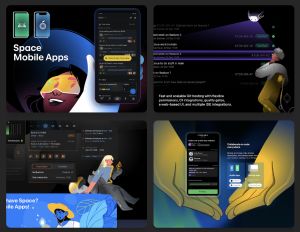 At JetBrains, from time to time, product designers work on marketing tasks, and from that beautiful narratives emerged
At JetBrains, from time to time, product designers work on marketing tasks, and from that beautiful narratives emerged
3. What are 2 things you were not taught in school (if you were formally trained in design) that you wished you had been taught?
I was never really taught pitching and storytelling during my school years. I realized the importance of these skills much later when I started teaching 3D design to fellow students at the university as a part of the skill-exchange club. Having a narrative is crucial to keeping people engaged during presentations, and finding my way through this was an exciting challenge, but I’d love to have learned about it earlier.
Now I invest a decent amount of time in refining my presentations, showcasing my work, and rehearsing, and I recommend doing the same to every artist and designer. This is a vital skill, which is almost impossible to automate, even with AI.
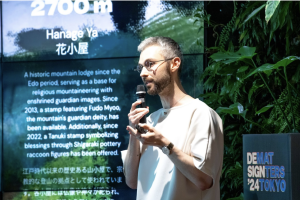 Presenting at Design Matters Tokyo
Presenting at Design Matters Tokyo
4. What are the biggest challenges you’ve had to face as a designer? Did you overcome them? How?
Breaking the bias. My primary focus is on enterprise software product design, which implies narratives shaped by the current snapshot of the industry. However, sometimes you need to forget about all the established UX patterns or writing style guides to support a new emerging story (think, a concept for a new product) that you are trying to convey.
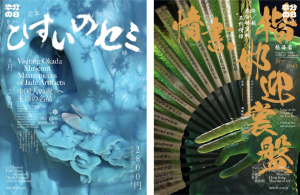 Anton’s way of escaping from the bias is the creation of the most odd images that come to his mind
Anton’s way of escaping from the bias is the creation of the most odd images that come to his mind
The only way to achieve this flexibility is to allocate proper time for experimentation and “stretch this muscle” until it becomes second nature. While you can use AI tools to polish your writing, presentation / narrative know-how is something you need to master yourself.
On a related note, something similar happens due to the increasing complexity and feature set of dedicated tools. When you open Blender, you might realize that you can do a complete picture there. And with that, the rabbit hole may appear. The challenge I see is always to have the skill to step back from a tool to focus on the story and concept. And if, for that to happen, you need to combine several tools or even exclude the one you usually employ, that’s fine. In other words, detaching from an accustomed tool is a bit of a challenge.
Similarly, I would expect over reliance on Midjourney and similar generative tools.
5. Why do you think Design Matters?
As this question is broad and complex, I’d like to focus on a single aspect that I think about most often.
In my view, design is a tool for motivation and transparency. When we design, we provide a bigger picture, create space for collective brainstorming, and kick off the process of imagination. This aspect of design is critical during team collaboration. By implementing transparency in future changes to the product or project through showcasing all stages of the design, you can foster a shared belief in the idea or concept among the team members.
Each designer should also work on developing their own style, avoiding too much influence from AI or algorithms, and infusing their work with personality. This way, others can feel an emotional connection, and you can attract and build relationships with wonderful people who will help you produce amazing work.
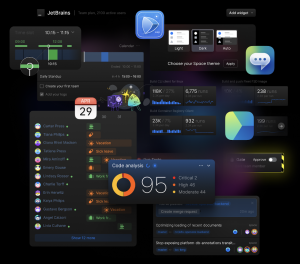 You can explore a style studies for projects Anton did at JetBrains by visiting: Space Visuals or Fleet
You can explore a style studies for projects Anton did at JetBrains by visiting: Space Visuals or Fleet
At the end of the day, it is all about connecting with people and building new relationships. Design plays a crucial role in achieving this.
* * *
Do you want to hear more from Anton? He will give a talk at the digital design conference Design Matters 24, which will take place in Copenhagen & Online, on Oct 23-25, 2024. Get your ticket here! Connect with Anton on LinkedIn. Don’t forget to check out Anton’s Journal Half of 8 and study of Fuji Yoshida Trail.

